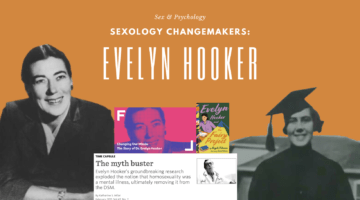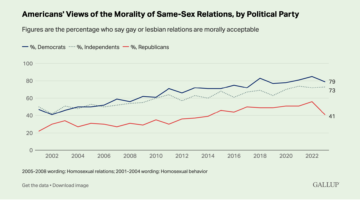Setting The Record Straight On Sexual Orientation: 8 Myths Debunked By Science
June 3, 2015 by Justin Lehmiller
“I call upon the people of the United States to eliminate prejudice everywhere it exists, and to celebrate the great diversity of the American people”. – Proclamation by U.S President Barack Obama, May 29, 2015
Each year that he has been in office, U.S. President Barack Obama has issued a Presidential Proclamation declaring June to be Lesbian, Gay, Bisexual, and Transgender (LGBT) Pride Month (see here for this year’s proclamation). Of course, the history of LGBT Pride Month traces back several decades before Obama took office–in fact, it goes back to the 1970s, when gay pride parades began popping up each June as a way of commemorating the 1969 Stonewall Riots. In honor of this year’s LGBT Pride Month, I thought it would be worthwhile to set the record straight with regard to a number of common stereotypes and misconceptions that many people continue to hold about sexual orientation. Below, I correct eight common false beliefs and provide links to more detailed scientific information debunking them.
1.) Homosexuality is contagious through social contact. Research has not found any support for the notion that same sex attraction is socially transmitted. Consistent with this idea, a recent, large-scale study found that same-sex attraction does not spread within adolescent peer groups. Likewise, other research has found that gay parents are no more likely to raise gay children than their heterosexual counterparts.
2.) You can “pray the gay away.” Not so much. Research on adults who have attempted to change their sexual orientation (regardless of whether they tried to do so via religion or some other means) finds that such “treatments” are generally ineffective and often do more harm than good.
3.) Most crossdressers are gay men. Many people believe that being gay means getting off on dressing up as member of the other sex (i.e., crossdressing/transvestism). While this may be true in some cases, the broader generalization is incorrect. Homosexuality simply means having an attraction to members of the same sex and says nothing about one’s interest in crossdressing. Believe it or not, research has actually found that most crossdressers are heterosexual, married men.
4.) Lesbians are having a lot less sex than everyone else. The concept of “lesbian bed death” has been around for decades, but it’s time we put it to bed. Although research reveals that lesbian couples do indeed have sex less often than other types of couples, sexual frequency doesn’t tell us everything. When lesbians do have sex, it turns out that they spend more time on it than everyone else. Moreover, research finds that lesbian couples are no less sexually satisfied than other couples.
5.) Bisexuals are just gays who haven’t come out yet. This is a belief that many people (both heterosexual and gay) hold, but it isn’t true. Of course you can find examples of people who have said they were bisexual because they weren’t quite ready to come out as gay, but this shouldn’t undermine the fact that there are a lot of bisexual people out there who really do have strong attractions to both men and women. See here and here for research supporting the idea that bisexuality is indeed a distinct sexual orientation.
6.) Anal sex is the most common sexual behavior among gay men. Although there is a common tendency to conflate “anal sex” with “gay sex,” this doesn’t match up with reality. Research finds that oral sex and mutual masturbation are far more common among men who have sex with men. Not only that, but anal sex has actually become quite common among heterosexuals–it’s not a behavior limited to people of any one sexual orientation.
7.) All lesbians do is “scissor.” Locking their legs like a pair of scissors and rubbing vulvas is something that some lesbian couples practice; however, not all of them do it, and other sexual behaviors actually appear to be more common, including oral sex, fingering, and mutual masturbation.
8.) Same-sex parents aren’t as good as different-sex parents. The vast majority of research in this area has found that children do just as well regardless of their parents’ sexual orientations. However, it is worth noting that one recent study reporting no difference in adopted children’s outcomes revealed that same-sex parents adopted higher-risk kids than their heterosexual counterparts. In light of this, a finding of no difference is truly a testament to the parenting qualities of same-sex couples.
Want to learn more about Sex and Psychology? Click here for more from the blog or here to listen to the podcast. Follow Sex and Psychology on Facebook, Twitter (@JustinLehmiller), or Reddit to receive updates. You can also follow Dr. Lehmiller on YouTube and Instagram.
Image Source: iStockphoto
You Might Also Like:

Dr. Justin Lehmiller
Founder & Owner of Sex and PsychologyDr. Justin Lehmiller is a social psychologist and Research Fellow at The Kinsey Institute. He runs the Sex and Psychology blog and podcast and is author of the popular book Tell Me What You Want. Dr. Lehmiller is an award-winning educator, and a prolific researcher who has published more than 50 academic works.
Read full bio >


